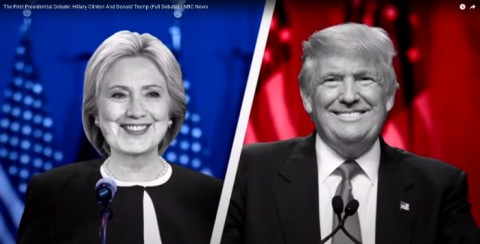The story that swallows the news

This election season has seen calls for journalism to rise to the rather bizarre occasion. Candidates’ claims should be fact-checked, not just reported. Lies should be called lies. The news media, the argument goes, needs to step up and do more.
Perhaps—but it also needs to do less. The problem with election reporting isn’t that it fails to inform voters about the issues. It’s that this critical work gets obscured by the dominant media focus on the narrative, the constant emphasis on seeing candidates and campaigns through the lens of story.
Exhibit A: the presidential debates.




